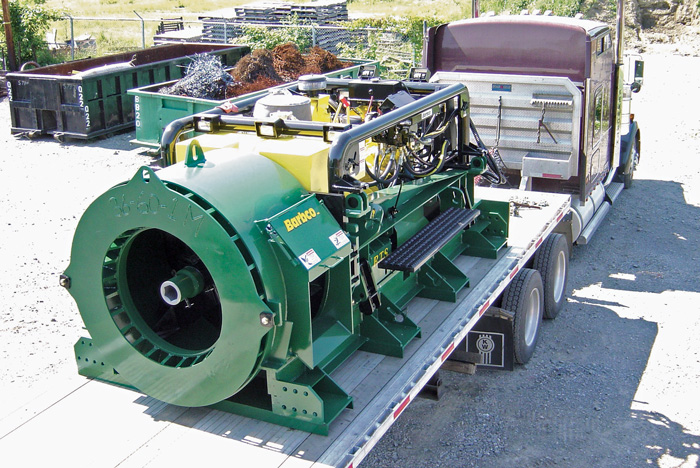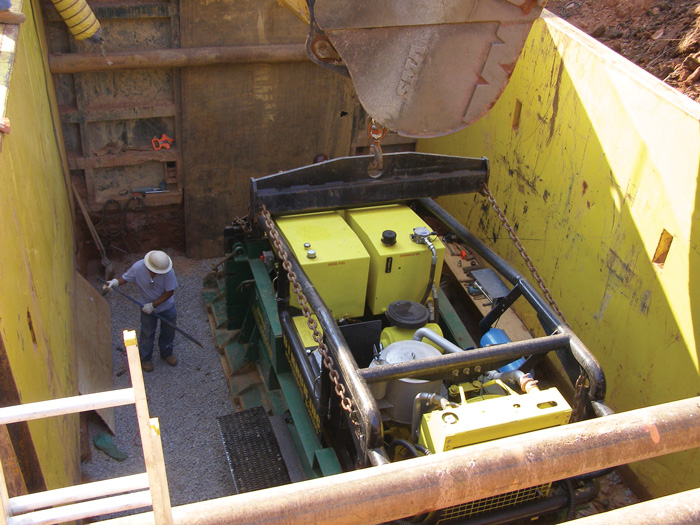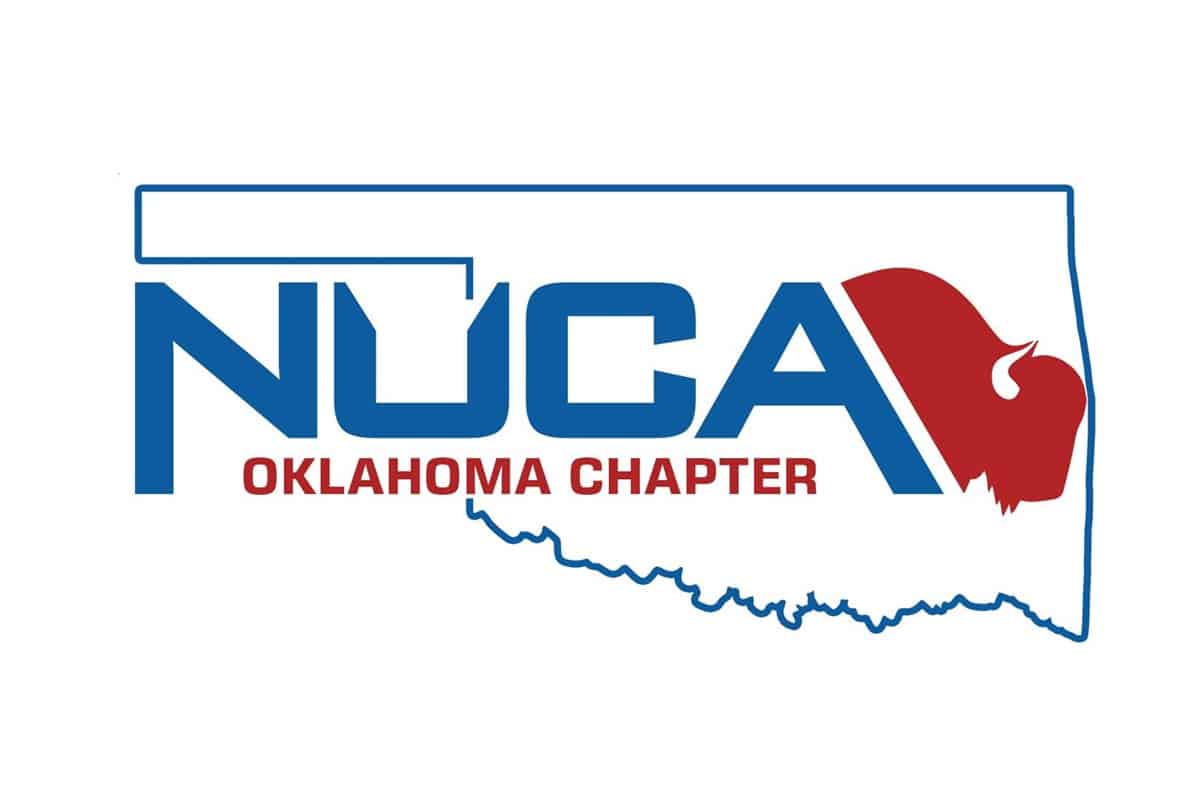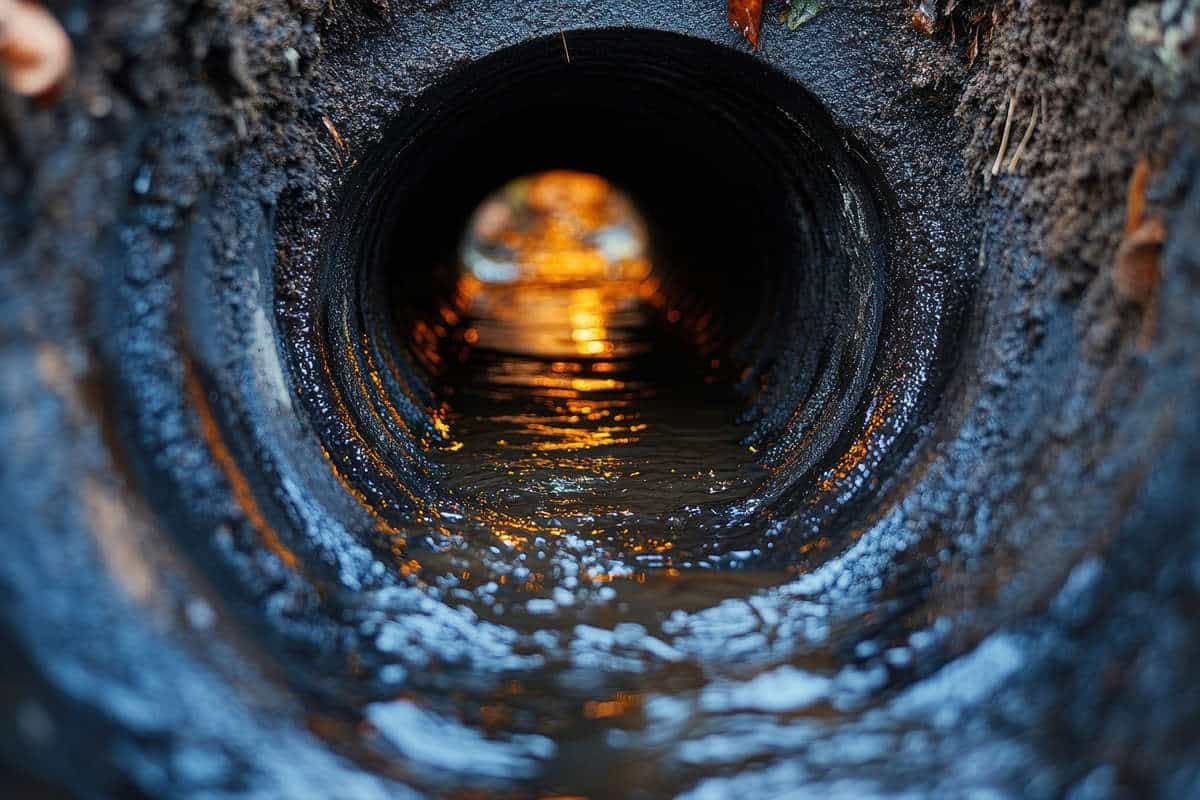Boring Bits
 Two adjectives — “new” and “tried-and-true” — are not often found in the same sentence. When the subject is auger boring, however, they both apply. The old and familiar auger bore boasts higher-tech features that make it a 21st-century mainstay in the construction industry.
Two adjectives — “new” and “tried-and-true” — are not often found in the same sentence. When the subject is auger boring, however, they both apply. The old and familiar auger bore boasts higher-tech features that make it a 21st-century mainstay in the construction industry.
The basic boring principle goes back to the inclined plane dreamed up by Renaissance engineers. A cutting head in a boring machine loosens soil and rock, which then is “augered,” that is, it is moved from the front to the back by a rotating inclined plane that is wrapped around an axis. Dirt or rock is gathered at the front, moved to the back where it is emptied, and — voila! — a tunnel of a certain diameter has been created.
Nothing fancy about any of that. The very fact of simplicity is what makes the machines such essential parts of the construction scene. More to the point, they are working with sophistication and accuracy in an industry that increasingly places a premium on close tolerances.
“When I say precise, I mean precise,” says Jimmy Lee, a 40-year veteran of the industry and Lead Technician on jobsites for manufacturer American Augers. “We have methods now so we can get it within one quarter of an inch.” He cited a 660-ft bore that was completed one-sixteenth of an inch off grade, which is a dust layer away from perfection. He says a four percent deviation in 100 ft typically is allowable, an engineering parameter easily stayed within by many of today’s boring machines.
Grade accuracy is important in utility pipe installation, with a common boring job being construction of a gravity sewer system. If an encased pipe slightly pitches up or levels out in its progress underground, the sewage won’t flow and the system won’t work. Therefore grade accuracy in utility tunneling is important — as essential as vertical integrity in a high-rise building or a correctly engineered tilt on a highway curve.
A good boring job begins with excavation of the working pit, in the opinion of Lee. “The pit setup is probably 70 to 80 percent of the job. A good pit will give a good bore and a bad pit will give trouble.” A key is flooring the pit with timber or, in the case of longer-term usage, pouring a concrete slab. Setting up the equipment on an earthen base is asking for trouble.
 Bored tunnels can range from 4 in. in diameter up to 96 in. (with at least one manufacturer capable of turning out a 120-in. boring unit). However, most utility tunneling is for casing 16 to 42 in. in diameter that will carry water or sewer lines.
Bored tunnels can range from 4 in. in diameter up to 96 in. (with at least one manufacturer capable of turning out a 120-in. boring unit). However, most utility tunneling is for casing 16 to 42 in. in diameter that will carry water or sewer lines.
In most instances, boring machine contractors are called in to tunnel under existing finished surface structures or to intersect with a subterranean one. “In my entire career of 24 years,” says Arvid Veidmark, Senior Estimator and Vice President of Specialized Services Co. in Phoenix, “we have only done one bore where we have bored under open dirt. Everything else was because we had to get under something.”
Yet tunnels sometimes are preferred to open excavation. A cut might be exceptionally deep or an open area too environmentally sensitive to disturb. Lee talks about utility contractors who opt to tunnel under county roads, rather than slice them from the top, to avoid recurring maintenance calls on the broken surface of the road. Boring, in that case, is more cost-effective. “We’re taking that work away from the open trench guys.”
Advances in auger boring technology include real-time sighted boring using a digital camera that lets the operator of a guided boring machine steer the adjustable cutting head, keeping it on grade. The Bohrtec systems used in ICON Group machines also include a pilot tube boring method in which a slender tube is guided to a reception pit, with the tunnel then being widened and a casing of larger circumference jacked along the pilot tube route.
“In conventional auger boring for, say a 36-in. casing, if you run into an obstacle, you have the option of sending someone up to the face and trying to remove the obstacle or abandoning the bore,” says ICON Vice President David Crandall. “With piloted tube boring, you can pull back the power rods and try another route.”
Horsepower is always a plus in an industry where torque is measured in 100,000-lb increments and pounds of thrust can top 1 million. Barbco Inc., for example, takes pride in ensuring an engine is strong enough. “We offer more horsepower and torque per mission size — that’s what we do. We understand that it is torque that cuts the hole, with enough power to get the job done,” says Barbco General Manager and Vice President David Barbera. He adds that Barbco machines’ simple and strong construction and sufficient horsepower give an auger longevity.
Michael Byrne Mfg. stresses another component in the auger bore drivetrain — the transmission. “The heart of any of these machines is the gearbox,” says Byrne CEO Jim Weist. “Anyone can get a John Deere or Cat engine, but what is going into and driving that auger and taking the thrust is really where the rubber meets the road. By bringing that in house, we gained far more control over our product.” Byrne bought out transmission builder Crichton Mfg. in 1988.
Retracting augers easily from a tunnel is a feature of American Augers machines. Its Quik-Tran system pulls back the digging heads smoothly and safely. “A 20-ft section can take 20 minutes to pull back. We can pull it back in 30 seconds,” says Lee. “Some have tried to do it with cables, and that’s dangerous.”
Cradle boring machines — in which the equipment hangs from the boom of a pipelaying machine — have grown in popularity with the surge in oil drilling. Distribution lines for the crude oil can be bored relatively quickly using the cradle devices.
Safety First
All of the manufacturers stress safety in the operation of their traditional auger bores. When a machine weighing several tons accidentally tips over or otherwise malfunctions, it is a hazardous situation. In many cases, however, the operators are at fault.
“Auger boring machinery requires know-how, and if you put someone in that hole that doesn’t know how, he can be seriously injured or killed,” Barbera says. “In only a slim number of cases are there no warning signs that a rollover is about to occur. Most often, a machine is jumping and bucking and the operator is ignoring it. There are signs of trouble and they need to be given the attention they deserve.”
Emergency shut-off switches are a common feature on the boring machines, as well as remote control units. But the switches and other safeguards are of little use when they are worked around or removed, or an operator insists on working alongside a machine.
To offset the tendency to be nonchalant about operation safety, manufacturers extensively train new operators; Lee says he offers free on-site technical support for up to a week. “Operators can make foolish mistakes and that’s why we want to give them all the training we can.”
Builders and owners of these new, tried-and-true machines agree on this: Auger boring is going to be around for a long, long time.
Giles Lambertson is a Freelance Writer for Utility Contractor, based in Winchester, Kan.




